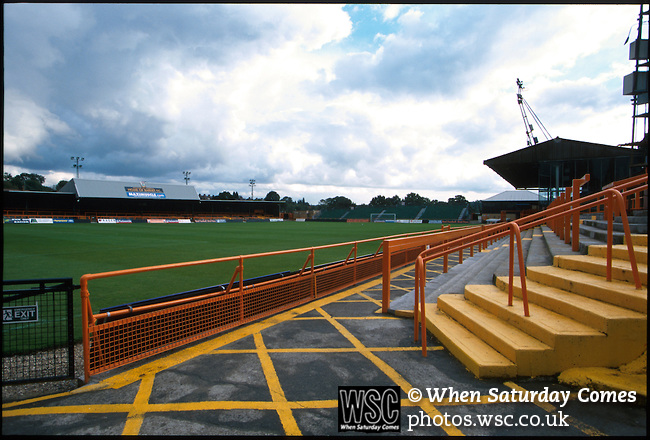
From Barnet’s Underhill to the Manor Ground of Oxford via Grundy Hill and Easter Road, pitches with a slope have become part of football’s folklore
13 April ~ My school pitch sloped steeply from one goal down to the halfway line, and then more sedately to the other goalmouth. As an 11-year-old unable to kick a ball much further than ten yards on the flat with a following wind I dreaded games lessons.
It’s easy then for me to imagine the sense of foreboding felt by visiting teams as they saw the slope on grounds such as Barnet’s Underhill Stadium or Oxford’s Manor Ground for the first time. Although part of the folklore of the game, pitches with a slope are disappearing at all levels.
Stadium redevelopment has taken its toll, a trade-off of character and history for improved facilities. It isn’t a recent trend. Yeovil’s Huish Athletic Ground, with its reputation as an FA Cup giant’s graveyard, and Wycombe’s Loakes Park, with its 11-foot side-to-side slope, disappeared approaching 30 years ago. Barnet stayed at Underhill (11 feet end to end) until 2013. But stadium developments tell only a part of the story – progress through the leagues or participation in FA competitions are also part of the picture.
In 2008 Oxenhope Recreation were forced to relocate from the pitch they had occupied since 1932 so they could progress to the West Yorkshire League, but have now been able to return to redeveloped facilities. Their old home, the top pitch on the Recreation Ground, had an “eye-popping end-to-end slope”. Although Chard Town seem free to remain in the Western League, after several years under threat, their slope means they are excluded from participation in the FA Vase and FA Trophy.
If the thought of playing at a ground like Horwich’s Grundy Hill – “16 feet from top diagonal to bottom diagonal and the contours of corrugated iron” – was intimidating, opinion seems divided on whether a pitch slope has any effect once games kick off.
Ian Baraclough, a serial visitor to Underhill with Lincoln, Notts County and Scunthorpe, and a former manager of Motherwell whose Fir Park pitch has a six-foot slope side to side, has a clear view. “I never got the impression [the Fir Park slope] had any effect. I’m not sure when you’re playing you are conscious of slopes.” Although the ball would run on down the hill, Baraclough likened it to playing with a strong wind. For him the impact of a slope is in the psychology of visiting teams.
Clubs with end-to-end slopes often prefer to kick downhill in the second half. Hibernian’s Easter Road had a six-foot slope until 2000. As a visitor with Aberdeen Alex McLeish “realised the significance of Hibs kicking down the slope in the second half” but felt “any advantage they got was all part of the mind games of football”.
For former Hibs player Lawrie Reilly the effect of kicking down the hill in the second half during the 1950s was “like a war cry”. In a similar way, John Sheridan, playing for Leeds in 1984, described a 5-2 defeat at Oxford’s Manor Ground. The visitors, 2-1 up at half time and comfortable, were overwhelmed as the home side attacked down the hill in the second half.
The FA Cup has contributed to the mythology around sloping pitches. Yeovil’s famous 1949 FA Cup victory, one of around 20 as a non-League side, over the “millionaires’ club” Sunderland stands out. Yeovil’s player-manager Alec Stock used the press to exaggerate the significance and scale of the slope and to question whether the visitors could cope physically with the challenge.
He added to the mystique by refusing to allow the opposition to train on the pitch. Over the years television too has added to the story, typified by non-League Wycombe’s third-round draw with Middlesbrough in 1975 or more recently Harrogate Railway’s meeting with Mansfield where commentary gave the slope plenty of exposure.
Whether or how sloping pitches make a difference misses the point for me – it’s about folklore. Before Hibs moved the Easter Road pitch 40 yards to one side in 1924 to allow the construction of the main stand the slope may have been even more severe.
The players from that earlier time told Reilly that if the conditions were icy, especially on the wings, they could slide past opponents with the ball between their feet. The story may be apocryphal but is worth a thought as we sit in our identical stadiums with their pristine surfaces. Brian Simpson
This article first appeared in WSC 362, April 2017 – available here
Top photo by Tony Davis/WSC Photos: Underhill, the wonky former home of Barnet